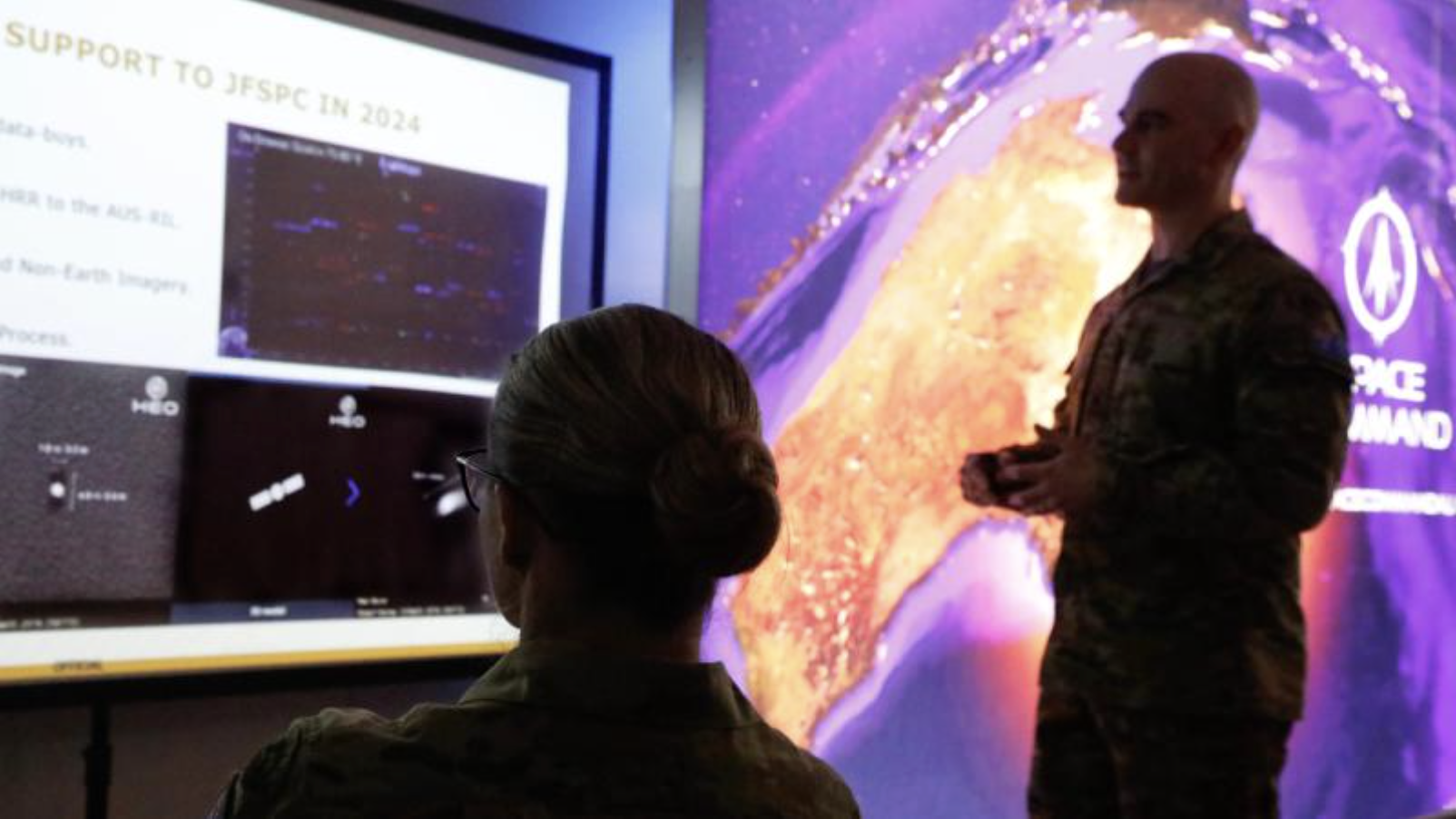WASHINGTON — With the Australian Department of Defence working on an update to its 2024 National Defence Strategy, the country’s Space Command is considering its options for gaining “space control” capabilities, according to a senior military official.
“With space control, [we’re] looking at … how do we as Australia best contribute not only to the defense of Australia and our immediate region, but then also [to] a credible capability, cooperatively within a partnership?” Army Brig. Gen. Christopher Gardiner, space and cyber attaché at the Australian Embassy here in Washington, said on Wednesday.
“[T]hinking from my perspective, anyway, you might have terrestrial-based effectors. You’ll have sensors and other pieces that enable the contribution through that space mission area,” he told the US Air and Space Force Association in an online interview.
Space control is one of four key focus areas for Australian Space Command, Gardiner explained, along with space domain awareness, satellite communications (SATCOM), and intelligence, surveillance and reconnaissance (ISR). The Defence Department last November made a commitment to invest $9 to $12 billion Australian ($5.9 to $7.9 billion) over the next decade to military space programs, he noted.
Further, the Australian Defence Force (ADF) last year put together Concept SELENE, a framework for space operations, Gardiner said.
“Concept SELENE is our space concept that sits within a broader concept framework. So, each domain has a concept that describes … how we’re trying to get after it: Use the domain, build resiliency,” he said.
“[W]ithin that, it actually recognizes that we don’t have enough resources to build that resilient architecture in a sovereign sense, we need to partner and we need to cooperate to generate the resiliency effect,” Gardiner elaborated.
Thus, he said, Australian Space Command is taking a page from the US Space Force’s approach to acquisition by first focusing on what commercial activities it can leverage, then looking to partners for capabilities it can share, and only lastly building its own space systems.
While Concept SELENE is not publicly available on the Defence Department website, the Royal Australian Army’s online journal for professional development, The Cove, has written a number of articles about its roles for the Royal Australian Corps of Signals.
A July 8 article, “Cert Cito Ex Astris: Workforce,” quoted the Concept SELENE’s core tenant as follows:
“The ADF will seek space advantage to enable freedom of action by temporally assuring access and disrupting or denying an adversary use of the space domain, as required.”
A Sept. 7 article, “Signalling the Future: Royal Australian Corps of Signals and the Next Century of Australian Space Power,” elaborated:
“Space control operations are becoming increasingly important to protect Australia’s freedom of action in space. This includes both defensive and offensive counterspace measures such as jamming, spoofing, or cyber disruption of adversary space assets (Swope et al., 2024, pp. 3-5). Signals personnel should therefore contribute to space order of battle development, signal propagation analysis, and cross-domain targeting effects planning. These roles are envisioned in the ADF’s Concept SELENE (Australian Defence Force, 2024) as necessary contributions to theatre operations and allied interoperability.”
While the effort to further flesh out ADF’s space control mission is a work in progress, Gardiner cited tangible progress on the other three space focus areas.
“Within space domain awareness, the achievement of the Deep Space Advanced Radar Capability is excellent. When we start looking at how do we do ISR, there are other programs that are achieving exactly the need that that is required,” he said.
While Gardiner didn’t elaborate, back in 2022 Australia’s then-Defence Minister Peter Dutton said that the Defence Department had “committed to a broad range of cooperative satellite activities” with the National Reconnaissance Office, which owns and operates US ISR satellites.
Further, Gardiner said that with regard to SATCOM, “there’s a program that is invested with money.”
The Australian government took heat from its domestic space and defense industrial base in November 2024 when it canceled the ADF’s biggest ever space program, called JP 9102 — a $5.3 billion effort to build an encrypted military SATCOM constellation of three to five birds under a contract with Lockheed Martin. The constellation was to provide communications over the Indo-Pacific region.
However, in July, the ADF published a request for information (RFI) from industry regarding what appears, according to multiple press reports, to be a downsized replacement program, called SPA9102.
According to a July 8 article in Asian Military Review, the RFI states: “Defence has a need for a UHF-band payload in a GEO orbital slot within the field-of-view of Australia.” It also opens the door to solutions beyond a bespoke-built SATCOM network, asking industry about capabilities such as “hosted payload on a multipurpose platform, a network of small/nano satellites, or leveraging allied constellations with sovereign enhancements,” the article adds.
Gardiner said that the work on fleshing out future space capabilities is being done in tandem with the larger ongoing review of the April 2024 National Defence Strategy.
“Right now we’re in the middle of a National Defence Strategy review. So, in ’24 we had the current release, and we’ll receive our next in ’26,” he said. [I]t’s a robust process, so it goes through all of the implications and then, aligned with the Integrated Investment Program, tells us how we’re getting after that.”

